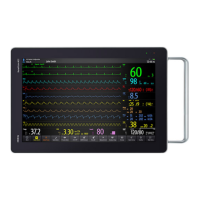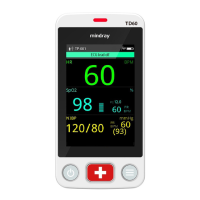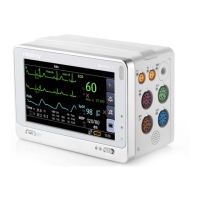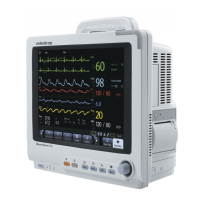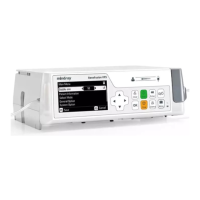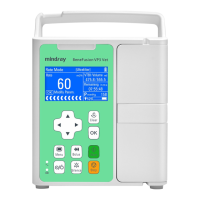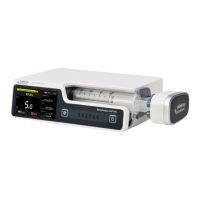10
BeneVision N1
Quick Reference Guide
a cuff has been shown to result in the overestimation of BP (systolic and
diastolic) while too large a cuff results in the underestimation of BP.
Ensure that the cuff is wrapped directly over the patient’s skin. BP measurement
could be 10 to 40 mmHg higher or lower than actual when the cuff is applied
over clothing.
• The cuff should be applied so that the center of the bladder in the cuff is
over the brachial artery. Use the reference marker for ver.
• For best results, the cuff should be placed on the arm at heart level and
the lower arm supported passively. Published data indicates that BP can
increase about 2 mmHg for every inch that the cuff is below heart level and
decrease by the same amount if above heart level.
• Avoid compression or restriction of the pressure hose. Do not place the
NIBP cuff on a limb that is being utilized for any other medical procedure,
for example, an I.V. catheter.
• Have the patient sit quietly for several minutes before BP measurement and
remain still during measurement to avoid unnecessary motion artifact. If
the patient has not rested before measurement, BP could be elevated by 10
to 20 mmHg.
• Do not talk to the patient during BP measurement as talking has been
shown to result in a 10 to 15 mmHg overestimation of BP.
• The patient’s back and feet should be properly supported with the legs
kept uncrossed. Unsupported back and feet could increase BP by up to 15
mmHg, while crossed legs could result in a 4 to 12 mmHg increase.
• Other factors that have been shown to result in an overestimation of BP are
labored breathing (5 to 8 mmHg), full bladder (10 to 15 mmHg), pain (10 to
30 mmHg).
Guidance Table
Cuff Description Limb Circumference
Child 10 - 19 cm
Small Adult 18 - 26 cm
Adult 25 - 35 cm
Large Adult 33 - 47 cm
Thigh 46 - 66 cm
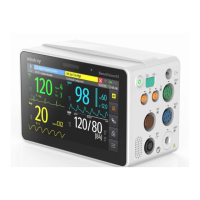
